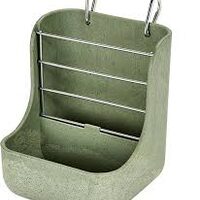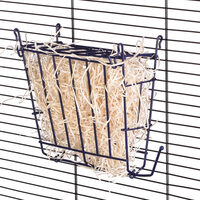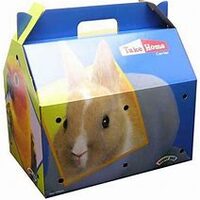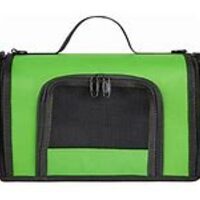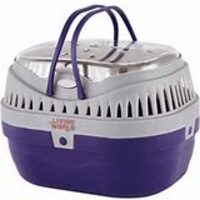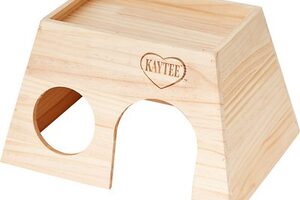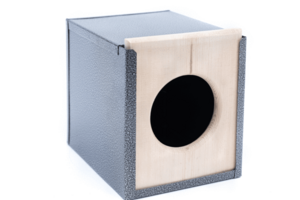We are still working on adding photos to this page, thank you for your understanding.
Chinformation
This section is intended to be geared towards beginners and therefore it only has basic care/supply information. We are still working on expanding the information and adding our own photographs. Please be sure to use the links when you see them in the individual sections, as they will give you more in-depth information.
With chinchillas it's common for items to go through a period of time where something is recommended and then many years later no longer be recommended due to health, safety, or an advancement in scientific knowledge. These can often be attributed to changes in design, construction, ingredients, or further research has been conducted and it's been found to no longer be considered safe.
OCR strives to provide accurate information on chinchilla care, as a result this page and related links will be updated as needed. If you are aware of any information that is outdated on our site, please contact us so that we can look into it so that we are not perpetuating outdated information.
Basic Information
Chinchillas frequently have a life span of 20+ years, I have however found that most of the backyard bred chins live about 10-15 years. Unfortunately chinchillas do not like to snuggle/cuddle (like most people think that they would) and prefer to be hopping around exploring things. Chinchillas are not ideal pets for younger children.
While chinchillas are considered "herd animals" it is important to remember that not all chinchillas need or want a cage buddy. Some chinchillas will even go as far as injuring or killing any other chin that they are forced to live with.
Although chinchillas can release a light burnt almond smell from their scent gland when startled, a chinchilla that is healthy and properly cared for should not have any offending odor.
As they require a high fiber diet that is made up of low calorie plant matter, chinchillas are great at being little poop factories! They will poop a few hundred times a day, regardless of what they are doing or who is holding them. Poop will get all over their cage and you will probably find it on the floor by their cage. However, a healthy animals poop will not smell and can easily be swept or vacuumed as they're firm and fairly dry. While a lot of chins can be trained to pee in a litter box, they cannot be trained to poop in one.
While there are some differences between males and females, either gender can make wonderful pets. Males will clean their penis with their mouths and this can be shocking or disgusting for some people. And while it isn't very common, males can sometimes get a hair ring around their penis shaft that they may need help removing. On the flip side, some females will spray urine at people when they are very upset or don't want to be held.
Temperature Control Importance
The most important thing that one should learn, remember, and abide by when it come to chins is that their environment should not exceed 75* F at all times. Failing to do so can result in overheating, heatstroke, and can cause a very long death (particularly in temperatures 80* and above). Keeping their environment between 65* and 72* F is highly recommended. If you cannot (or otherwise will not) be able to provide this all year round, do not get a chinchilla until you are able/willing to.
Furthermore, should a chinchilla get overheated for any reason, it's really important to make sure the chinchilla is cooled down slowly. Failing to do so can send a chinchilla into shock, which can lead to death.

Chins do not sweat like humans do and therefore a fan will do nothing to cool them down. A fan (or wind) cools humans down by causing sweat to evaporate quicker, making our internal heat escape quicker than normal, which results in a lower body temperature. Chinchillas also do no pant like dogs, panting helps dogs cool down by evaporating moisture from the tongue and mouth as well as exchanging the hot air in their lungs with cooler external air.
It's a great idea to have a thermometer placed at a cages highest point so that you're able to keep an eye on the temperature. While most people don't have to worry about humidity in their home, high humidity is an issue for chins. You can get Fluker's Digital Thermal Hygrometer on Amazon for under $20, it will provide you with both readings.
Additionally it would be a good idea to keep some marble slabs in the freezer to pull out when a chin gets warm. While these are not suitable for long-term use, it can help you cool down a chin if you're in a pinch.
Caution With Plastic

While these items can be cute, plastic should not be a permanent fixture in a cage. These items will be chewed on and can result in intestinal issues (compaction, perforation, etc), these issues can be serious and fatal.
While a lot of people get "tired" of hearing about the dangers of plastic, it is a real concern and I've seen it take the lives of many chinchillas. It should be noted that there are some exceptions to this rule.

Items not approved (but not limited to):
Hay Holder, Huts, Houses, Litter Pans, Coop Cups, Water Bottle Attachments
Exceptions with conditions:
- Nation Cage trays and platforms. If used, these need to be kept properly covered with anti-pill or blizzard fleece.
- Dust Bath Houses. They should only be in the cage when being used for a dust bath and only for a limited duration of time.
- Water Bottle. If using a plastic water bottle you will need to purchase a flat water bottle guard. And mount them both on the outside of the cage.
Avoid Exercise "Death Balls" & Harnesses/Leashes
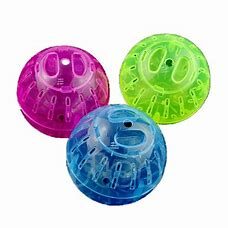
Pet stores typically recommend and sell exercise balls for chinchillas. These are often referred to as "Death Balls" by reputable breeders and rescuers. This is due to to despite having ventilation holes, these death traps do not have enough proper ventilation for chinchillas. This frequently results in the chinchilla having a heat stroke, suffocating, and dying. These balls are also very unsanitary as the chinchilla will poop and pee in it while hopping around, which can result in a very gross poop slurry that will get all over the chin and the floor.
While harnesses are great for a variety of other animals, they should not be used with chinchillas.
Diet and Treats
A chinchillas diet is pretty simple, it includes a few tablespoons of chinchilla pellets (Oxbow Essentials or Mazuri) and a handful of hay (Timothy) per day. In addition to pellets and hay a chinchilla should have access to clean water at all times.
While many people love giving their chins treats, owners need to use caution with what treats and the quantity/size of those treats that they give. Treats should be very limited (regardless of how much begging the chin does or how much they love them).
It's important to remember that the majority of books/articles are outdated and no longer have current information on a chinchillas diet or treats. And that the large majority of pellets available on the marked should not be fed to chinchillas.
Please go to our Nutrition page to learn more.
Chinchilla Cages

Cages are an integral part of chinchilla care, safety, and ownership. The majority of cages offered by pet stores are not suitable for chinchillas. OCR uses and recommends Midwest Ferret and Critter Nation Cages.
While very tall open cages were all the rage many years ago, they have fallen out of favor in more recent years due to the injuries (or death) that chinchillas would sustain from falling off a top ledge. It's now recommended that cage levels have a maximum internal height of 24-36". Modular styled cages (such as the Midwest Nation Cages) are acceptable.
Cages should be fully taken placed in a draft-free location and away from any direct sunlight.
Please go to our Chinchilla Cages page to learn more about cage requirements.
Exercise Wheels
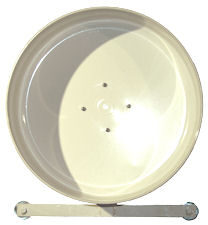
Unfortunately you will not find a wheel at a typical pet store that is actually safe for chinchillas. Aside from this within the last 5 years or so the debate on using wheels has become bigger. While the majority of people say that a properly sized wheel can be beneficial, there are a few people advocating to longer use wheels.
At this point I see this more of a personal preference and will leave the decision up to the owner and their veterinarian. I personally find them to be a great addition for chins that can't have a large cage with ample room to jump and play, however chins should be at least 8-12 months of age before using a wheel as younger animals need to put their energy into growing,
Please go to our Exercise Wheels page to learn more.
Pellet Dish
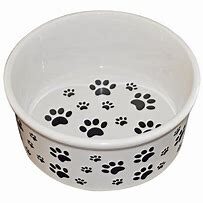
There are many options available when it comes to pellet dishes. But the safest and most common option are heavy ceramic dishes and metal coop cups that attach to the side of your cage. Sadly most coop cups don't fit snuggly in their holders and chins LOVE pulling the coop cups out of their holders and dumping the pellets everywhere. However, if you're lucky you may be able to find a heavy ceramic dish that fits perfectly in the coop cup holders.
If you decide that you want to use a ceramic dish, you will want to make sure it's large enough to not get knocked over when a chin is running and jumping around. And it should be placed on the bottom of the cage if you don't have the appropriate holder for it, as a falling heavy pellet dish can cause injury or death.
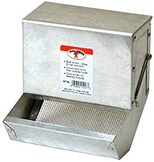
When selecting a dish, it's important to keep in mind to stay away from "J" feeders. These are typically made out of metal but are also available in soft and hard plastic as well. Aside from the potential of a chin digging in the pellets and wasting them, they can also be a safety risk as a chin can get stuck upside down in the top of the feeder. Being stuck in the position for an extended period of time can cause death.
Regardless of what type of dish you go with, it should be cleaned weekly.
Water Bottle

Before we discuss water bottles, it should be mentioned that water bowls should not be used with chinchillas. With that being said, water should be available to your chinchilla at all times and water bottles should always be mounted on the outside of the cage, never on the inside. If you decide to use a plastic water bottle a metal guard will need to be placed between the water bottle and the cage to prevent chewing on the plastic water bottle. And you should never use a water bottle that attaches to the cage with plastic.
Glass water bottles are the most commonly used as they are available at most pet stores. The two most common brands are Kaytee and Living World, these also typically have floating ducks or carrots inside to make it easier to see the water level. These usually range from $6 to $13.
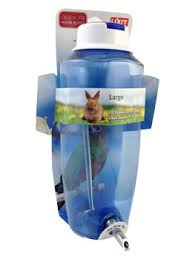
Some of our favorite water bottles are the flip-tops. These water bottles don't work on a vacuum principal and therefore won't be sucking up the dirt, bits of hay, and don't drip after being filled. As a bonus, they can also be filled while they are still attached to the cage. If this style of water bottle starts leaking it is generally because a little bit of debris has gotten stuck and needs to be cleared out. These can range from $10 to $25 and can be found on Amazon, the blue Lixit pictured typically sells for $20.95.
When it comes to water bottles, we typically prefer to use the now discontinued Edstrom Water Buddy, which is a flip-top bottle. They can still be found on places like eBay and were made in 8 oz, 16 oz, and 32 oz. Generally, You can expect to pay $15 to $25 for these. But I have found that these are the easiest to replace pieces when needed.
Water bottles should be cleaned weekly and it's always a good idea to keep an extra one on hand, particularly if you use glass ones as it's pretty common for people to accidently drop and break then.
Dust Bath
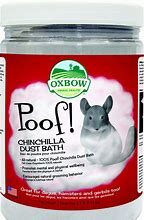
Dust bath should be just that, dust bath. Don't purchase any scented baths as these are prone to causing respiratory issues in chinchillas. While there is a sand variety available it does not clean the fur as well. OCR typically recommends using Oxbow Poof! Chinchilla Dust Bath, however ChillDust, brytin, and Blue Beauty dust are also acceptable. You can expect to pay $10-$13 for a container of dust that typically lasts a single chin several months.
A chin should be provided a bath 2-3 times a week or when the chin starts to look greasy (such as after handling) or dirty. Do not bathe a chin daily unless needed, as bathing excessively can lead to dry and itchy skin. The bath should be taken out once the chin is done rolling around, and not left in the cage to prevent chewing on a plastic container, and because they will poop and pee in it and therefore create a mush that will eventually stick to the chins fur and can cause stains on their fur.
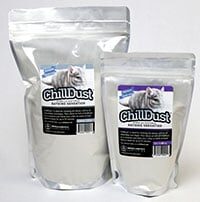 | 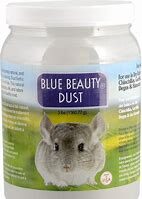 | 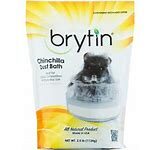 |
Dust Bath Container
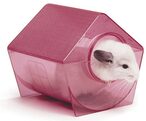
A good dust bath container is very important and it needs to be appropriately sized for a Chinchilla (meaning having enough room to properly roll around). For safety reasons, dust bath containers should always be placed on the very bottom of the cage, as a falling container can result in possible injury (or death depending on the weight) to a chin inside the bath or cage. While there are cute bath houses that resemble a chinchilla, those are not suitable for baths but are suitable as a hay holder.
Metal or glass bath containers are preferred. Our favorite is the extra large glass apothecary cookie jars and 1 gallon Vlastic pickle jars, as they are easy to clean and sanitize when needed and are heavy enough to not be knocked over by jumping chins. Pickle jars will need bedding or other items beside them to keep them from rolling. However, the plastic dust bath houses can be acceptable WHEN USED PROPERLY (ie, only in the cage for a few minutes while bathing).
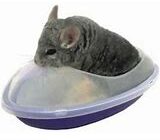 Open bath containers make cleaning and removal of the chinchilla a lot easier, however they don't contain as much of the dust. And enclosed dust bath containers keep in more of the dust when it's in use, but can make getting a chinchilla out of it a lot more complicated. You will never realize how strong a chinchilla is until its bracing itself against the inside of a bath container because it doesn't want to come out!
Open bath containers make cleaning and removal of the chinchilla a lot easier, however they don't contain as much of the dust. And enclosed dust bath containers keep in more of the dust when it's in use, but can make getting a chinchilla out of it a lot more complicated. You will never realize how strong a chinchilla is until its bracing itself against the inside of a bath container because it doesn't want to come out!
Plastic bath houses can typically be purchased from Amazon, or pet stores for $10 to $15. While metal ones can sell for $40 and be powder coated. Some animal carriers do have a metal detachable bottom which can also double as a dust bath.
Hay Holder (Optional)

 Hay Holders are optional when it comes to chins. Many chins love to root around and forage in a good pile of hay that has been placed on the bottom of the cage floor. However, this typically leads to a lot more wastage (I am only mentioning this so that you can be aware, and maybe buy the next size up in hay).
Hay Holders are optional when it comes to chins. Many chins love to root around and forage in a good pile of hay that has been placed on the bottom of the cage floor. However, this typically leads to a lot more wastage (I am only mentioning this so that you can be aware, and maybe buy the next size up in hay).
We discontinued the use of hay holders with our rescues in late 2020.
When you are considering a hay holder, it's important to remember that they can also pose a risk to a chinchilla, from them getting stuck in it or injuring a leg from climbing on it.
If you're going to use a holder, ceramic or wooden ones are preferred. The two pictures are the most common items used for hay holders, as you may of noticed the one is not a hay holder at all. It's actually a bath house (that's not actually suitable to be used as a bath house), the larger size is preferred if you're going to use it as a hay holder. There is also a variety of hay holder that can be mounted on the outside of the cage and can be safer than the internally mounted ones, of course this is also dependent on how it's mounted to the cage. You can expect to spend $10-$20 for a hay holder.
As with all things regarding chinchillas, there's a variety of ones that should be avoided. Particularly wire ones should not be used with chinchillas as they can cause broken bones or lacerations when a chin goes to climb or jump on them, plastic ones should not be used to prevent a chinchilla from chewing on plastic. Below are a few others that should be avoided as well.
Bedding
Every cage setup and chin requires a different amount of cleaning, it is safe to plan on cleaning the cage 1-2 times a week (at minimum). If your chin gets yellow stains on its fur then it's not being cleaned enough as these are urine stains.
Shavings
The most common bedding used for chins is pine shavings (must be kiln dried, not air dried) and aspen shavings. It is incorrect that you must use only aspen, however if you are worried about finding a kiln-dried pine shaving then aspen would be a great second choice. When we tried aspen with the chinchillas it did not seem to absorb as much urine and therefore required to be changed more frequently. Do make sure to avoid the "micro" variety and don't fall into using "mulch" as both have very small splinters in them by the ton. NEVER USE CEDAR AS IT IS TOXIC TO CHINCHILLAS.
Kiln-Dried Pine Shavings
Many web sites erroneously list all pine as not be safe for use. You can use pine on chinchillas provided it has been kiln-dried and not air dried.
Cons of Shavings - Depending on the type and setup of your cage, using shavings can be very messy and require a lot more clean up than other type of items.
Fleece Liners
Another common bedding for them is fleece. It can look cute and beautiful but is honestly more work to upkeep to keep your chinchillas habitat looking clean. Fleece needs to be switched out 2-3 times a week you will want to have multiple sets on hand, generally fleece begins to have a strong odor to it if left for too long.
It should be 2-4 layers thick and it needs to be shook out thoroughly prior to washing. Only use scent free detergent on them. Should your fleece start to develop a smell over time, pour a cup of vinegar in when you wash them.
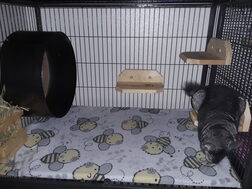 When using fleece coverings over plastic, please be sure to check if the chinchilla has chewed through or otherwise gained access to the plastic item that it's covering. While many chins don't, there are sneaky chins that will and then progress to chewing up the plastic item. You will be surprised how quickly they can destroy a plastic piece. Unfortunately, the majority of the chins that have been in my care love to shred fleece.
When using fleece coverings over plastic, please be sure to check if the chinchilla has chewed through or otherwise gained access to the plastic item that it's covering. While many chins don't, there are sneaky chins that will and then progress to chewing up the plastic item. You will be surprised how quickly they can destroy a plastic piece. Unfortunately, the majority of the chins that have been in my care love to shred fleece.
Photo by OCR.
Care Fresh (Recycled Paper Bedding)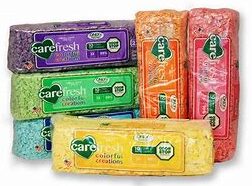
Do not use any recycled paper type bedding as chins frequently chew and ingest it (as with many types of bedding). This then causes it to expand in their stomach, resulting in compaction and can lead to death.
Newspaper
We do not use or recommend using newspaper for chinchillas.
Jumping Ledges & Ramps
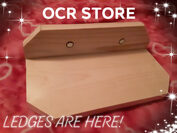
Ramps are generally not recommended for chinchillas unless they have some type of handicap that necessitates their use, or are otherwise unable to jump onto ledges due to age. IF a ramp is required for your chinchilla, it should not made out of plastic, and should preferable be a solid surface. If you happen to use a wire ramp, it needs to be kept properly covered with anti-pill fleece AT ALL TIMES. This will prevent a chinchillas toe/paw/leg from getting stuck in it and possibly broken (which can sometimes require an amputation depending on the severity of the injury).
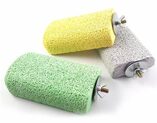
Chins are made for and love jumpnig/hopping and that is what makes ledges ideal for them. I have a high preference to recommend wooden ledges, as this gives the chinchillas more surfaces to chew on (therefore helping to keep their teeth warn down). A lot of people also like to use pumice stone ledges, and some cover plastic platforms with anti-pill fleece - although this isn't my personal ideal.
If you are thinking of covering a ramp or plastic platform with fleece, I'd like to mention that the majority of chins that have been in my care have had a tendency of removing (shredding) fleece and proceeding to chew through all the plastic. Not all chins are the same, and some will never do this. It is however something to keep in mind as the plastic is a safety concern.
Carrier
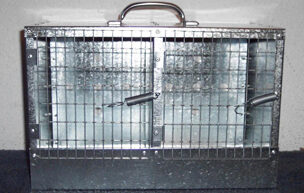
Having a proper carrier is important when it comes to transporting. Ideal carriers are made out of wire and sheet metal. This style is typically made and sold for rabbits, guinea pigs, and chinchillas. These allow for some type of bedding to be use and will prevent a chinchilla from chewing through.
While these can be up to $60 for a single carrier, you can frequently find these used for $20.

The first carrier pictured is a Ryerson Carrier
Not Acceptable Carriers
Fabric (aka soft-sided). These carriers do not allow for proper ventilation and therefore it will get warm in the carrier even with air conditioning. Furthermore, anti-pill fleece is considered to be the only fabric option to use around chins. The fibers from these soft-sided carriers can cause their intestines to stop working if it's chewed and swallowed (just like other fabric).
Cardboard and paper carriers that are often given out by pet stores are not appropriate as they can be quickly chewed through and some are flimsy enough that they don't even support the weight of the chinchilla itself.
Hammocks and Houses
Hammocks can be a great addition and luxury to a chinchilla. These should be made out of anti-pill or blizzard fleece and not any other king of material. You'll want to keep an eye on a hammock in case a chin decides to become a fleece shredder.
While chins can survive without a hide/house/hut, the majority of the ones that end up in our care love having a place to hide away and sleep. When purchasing a hide/house it should abide by the NO PLASTIC rule, wooden ones are a great option and also provide them with another chewing source to help wear down their teeth. If you don't want to use wood for their house some companies do sell metal ones. Oxbow makes edible tunnels and houses. Regardless of which one you go with, you will want to keep in mind that it will need to be an appropriate size and also allow for proper air flow.
D.I.Y. Instructions
This section is a work in progress and we hope to include:
- Processing Wood for Chews
- Making Nation Cage Fleece Liners
- Sewing Fleece Hammocks
- Building Ledges & Platforms
Chinchillas and Other Pets
It is neither safe, nor ethical to allow a chinchilla to be housed with or otherwise interact with animals of another specie. Some diseases can go from specie to specie, and chinchillas have their own special diet and care.
It is also not ethical for chins to be placed with other animals (particularly cats and dogs) for the purpose of photographs. Many people just can't resist how "cute" it looks, but allowing either situation can be fatal for your chinchilla and a responsible owner would not allow for such interactions.
Veterinarians
Having a good (experienced) chinchilla vet is very important for the health and well-being of a chinchilla. While many veterinarians will see chins, it's always best to go with ones that are well experienced with them. Please remember that not all veterinarians in the same office will have the experience that is desired when it comes to a chins care. It's important that you get established with a veterinarian prior to an emergency as some vet offices only allow emergency services to already established clients.
I'm unfortunately not familiar with experienced veterinarians from other parts of Oregon, or out of state.
Below is our list of favorite veterinarians for chins. Please note: OCR receives absolutely no incentive/discount/freebies of items or services for these recommendations.
Kelly Pickard-Hazzard, DVM
Whole Pet Veterinary Care
340 Leslie Street, SE
Salem, OR 97301
(503) 363-6465
Web Site:
http://www.wholepetvetcare.com/
Julianne Vickstrom, DVM
West Hills Animal Hospital
430 SW 53rd Street
Corvallis, OR 97333
(541) 758-4509
Web Site:
https://www.westhillsanimalhospital.com/
Mark Burgess, DVM
Southwest Animal Hospital
2425 SW Cedar Hills Blvd.
Beaverton, OR 97005
(503) 643-2137
Web Site:
http://www.swanimalhospital.com/
Cremation Services
We never like to think of our little ones passing and when it happens we often may not know what to do with their remains. In many towns and cities burying your pets in your yard is actually illegal, so cremation would be a great alternative. I have used Dignified Pet Services (in Tualatin) multiple times for my personal pets, I have also helped some of my foster families get the funds to have their beloved pets cremated at this location.
Cremains can be kept in the little service urn that are provided for you, or you can purchase a special urn for your little ones cremains.
A private cremation is what I recommend the most, the remains of your animal will be kept separated from other animals and you will receive the ashes back in an urn. The normal fee for this (last I inquired) were $75 for a chinchilla. DPS also offers what is called a "Witness Placement" where you can put your little fury companion in the machine and wait for the process to be completed, there is an additional charge of $205 for this service.
I generally use the Witness Placement for all my critters, this gives me a peace of mind knowing that I was there for my friend through everything. This also gives me comfort in knowing that I'm 100% sure getting my own animals ashes back.
Please note: OCR receives absolutely no incentive/discount/freebies of items or services for this recommendation.
http://dignifiedpetservices.com/index.php
8976 SW Tualatin Sherwood Rd
Tualatin, OR 97062
Phone: (503) 885-2211
16475 SE McLoughlin Blvd
Milwaukie, OR 97222
Phone: (503) 783-6115
275 Lancaster Drive SE
Salem, OR 97317
Phone: (503) 404-4353


